Planet Earth is our home. Every day, we see its beauty in mountains, oceans, and forests. But our planet earth faces a big problem and that’s climate change. This issue touches every corner of the world.
It changes weather patterns and harms animals and plants.
One fact stands out: climate change is making the earth warmer. This warmth leads to big problems like storms that are stronger than before, seas that rise higher, and land that gets too dry or too wet.
In this blog post, we look at how climate change affects everything on planet earth. We talk about the weather, animals in the ocean and on land, people’s health, farming, and buildings. Our goal is to help you understand these challenges better.
Read on to learn more!
Key Takeaways
- Climate change causes more hot days and stronger storms. This leads to floods, harming homes and farms.
- Melting ice increases sea levels, threatening coastal communities and animal habitats. It also changes where animals can live.
- Health risks go up with more heat waves, causing illnesses like heat stroke. Food security is in danger as farming faces tough times from bad weather.
- Important infrastructure suffers damage from extreme weather, making it hard for people to access essentials like water and electricity.
- Actions are needed now to reduce the impact of climate change on our planet’s health, safety, and economy.
Climate Change Risks to the Formations on Planet Earth
Climate change poses significant risks to all of Earth’s natural formations, impacting landscapes, ecosystems, and the fundamental processes that shape our planet earth. Below is an overview of the primary risks faced by different formations due to climate change.
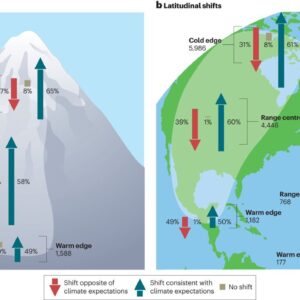
Mountains
Glacier Retreat & Snow Loss: Mountain glaciers are retreating rapidly, reducing water supplies for millions and increasing the risk of hazards such as avalanches, landslides, and floods. Snow cover is decreasing, and permafrost is thawing, destabilizing slopes and infrastructure.
Biodiversity Threats
Species adapted to cold, high-altitude environments face extinction as climate zones shift upward, often faster than species can migrate.
Extreme Weather
Increased rainfall at high elevations leads to more frequent and severe floods and landslides, threatening both ecosystems and human settlements.
Oceans
Rising Temperatures & Sea Levels
Oceans absorb most of the excess heat from greenhouse gases, leading to thermal expansion and melting land ice, which together cause sea level rise. This threatens coastal formations, wetlands, and low-lying islands.
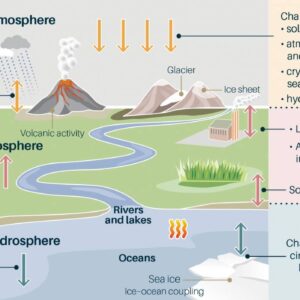
Acidification
Oceans absorb about a quarter of human CO₂ emissions, making them more acidic. Acidification harms coral reefs, shellfish, and disrupts marine food webs.
Marine Biodiversity Loss
Coral bleaching, shifting fish populations, and altered nutrient cycles are direct consequences, endangering marine ecosystems and the livelihoods that depend on them.
Deserts
Temperature Increases
Deserts are experiencing some of the highest rates of warming, with projections of 5–7°C increases by the end of the century.
Water Scarcity
Reduced rainfall and increased evaporation threaten water supplies for both people and wildlife. Melting glaciers, which feed desert rivers, further exacerbate water shortages.
Ecosystem Fragility
The delicate biocrusts that stabilize desert soils are highly vulnerable to extreme heat, risking further desertification and loss of agricultural land at desert edges.
Forests
Drought & Wildfire
Increased frequency and severity of droughts make forests more susceptible to wildfires, pests, and diseases. This leads to tree mortality and shifts in forest composition.
Biodiversity Loss
Many plant and animal species are unable to adapt quickly enough, leading to reduced diversity, especially in water-limited and temperature-sensitive forests.
Carbon Storage Decline
Forests’ ability to store carbon is compromised, fueling further climate change.
Soils and Landscapes
Erosion & Land Degradation
More intense rainfall, floods, and droughts accelerate soil erosion, reduce soil fertility, and change landforms, impacting agriculture and natural vegetation.
Altered Geomorphological Processes
Climate change shifts the balance of erosion, deposition, and sediment transport, reshaping rivers, coasts, and other landforms.
Cryosphere (Ice Sheets and Permafrost)
Melting Ice Sheets & Glaciers
The loss of polar and alpine ice contributes to sea level rise and alters ocean currents, with cascading effects on global climate and ecosystems.
Permafrost Thawing
Thawing permafrost releases greenhouse gases and destabilizes ground, threatening infrastructure and natural habitats in Arctic regions.
General Ecosystem Risks on Planet Earth
Habitat Loss & Species Extinction
As habitats shift or disappear, many species are at risk of extinction, especially those with limited mobility or specialized needs.
Extreme Weather Events
More frequent and severe storms, heatwaves, and droughts disrupt natural processes and human societies across all formations.
SHOP NOW ZAZZLE - CLICK BELOW
Summary Table: Key Risks by Formation
| Formation | Key Risks from Climate Change |
|---|---|
| Mountains | Glacier loss, landslides, floods, biodiversity loss, water scarcity |
| Oceans | Sea level rise, acidification, coral bleaching, biodiversity loss |
| Deserts | Extreme heat, water scarcity, biocrust loss, desertification |
| Forests | Drought, wildfires, pest outbreaks, carbon loss, biodiversity decline |
| Soils/Landscapes | Erosion, land degradation, altered river/coastal forms |
| Cryosphere | Melting ice, permafrost thaw, sea level rise, habitat loss |
Thoughts on Planet Earth
Climate change poses profound and interconnected risks to all of Earth’s formations. The impacts are already visible and are projected to intensify, threatening natural landscapes, biodiversity, and human societies dependent on these systems. The severity of these risks depends on the actions taken now to mitigate greenhouse gas emissions and adapt to a changing planet.
Why are shifting weather patterns dangerous for Earth’s plant and animal ranges?
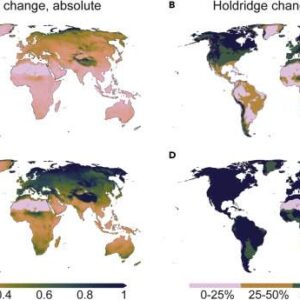 Shifting weather patterns are dangerous for Planet Earth and animal ranges because they disrupt the stable climate conditions that most species have evolved to depend on for survival. Many plants and animals are adapted to specific temperature, moisture, and seasonal cycles, so when these patterns change, species must either adapt, migrate, or face increased risk of extinction.
Shifting weather patterns are dangerous for Planet Earth and animal ranges because they disrupt the stable climate conditions that most species have evolved to depend on for survival. Many plants and animals are adapted to specific temperature, moisture, and seasonal cycles, so when these patterns change, species must either adapt, migrate, or face increased risk of extinction.
Here are the main dangers posed by shifting weather patterns:
Habitat Loss and Range Shifts
As temperatures rise and precipitation patterns change, suitable habitats for many species shrink or move. Plants and animals are forced to shift their ranges—often uphill or toward the poles—in search of conditions they can tolerate. However, not all species can migrate quickly enough or find new suitable habitats, especially when natural or manmade barriers block their path.
Disrupted Life Cycles
Changes in weather patterns affect the timing of seasonal events such as flowering, breeding, and migration. For example, birds may migrate earlier due to warmer springs, but if their food sources (like insects or plants) do not adjust at the same rate, mismatches can occur, threatening survival.
Increased Stress and Mortality
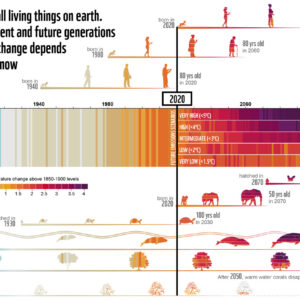 Rising temperatures, more frequent droughts, floods, and extreme weather events can directly harm plants and animals, leading to increased mortality and reduced reproductive success. For example, water temperatures above a certain threshold can kill fish eggs, and prolonged droughts can devastate plant communities.
Rising temperatures, more frequent droughts, floods, and extreme weather events can directly harm plants and animals, leading to increased mortality and reduced reproductive success. For example, water temperatures above a certain threshold can kill fish eggs, and prolonged droughts can devastate plant communities.
Ecosystem Imbalance and Biodiversity Loss
As some species decline or disappear, others—often invasive species or disease vectors—may thrive in the new conditions, further destabilizing ecosystems and reducing biodiversity. The loss of key species can have cascading effects throughout the food web.
Physiological Limits Exceeded
Many species have narrow tolerances for temperature and moisture. When weather patterns shift beyond these limits, species may be unable to adapt physiologically, leading to local extinctions or, in some cases, global extinction.
Shifting weather patterns on Planet Earth destabilize the delicate balance of ecosystems, forcing species to adapt rapidly or face severe consequences, including population declines, loss of habitat, and increased risk of extinction.
Impacts of Climate-Driven Ecosystem Collapse on Human Food Sources
Climate-driven ecosystem collapses threaten the stability and productivity of the systems that support human food sources. The consequences can be severe, affecting agriculture, fisheries, and food security worldwide.
Disruption of Agricultural Production
-
Crop Failures: Extreme weather events such as droughts, floods, and heatwaves can destroy crops, reduce yields, and degrade soil quality, making farmland less productive for years12.
-
Loss of Pollinators: Ecosystem collapse can lead to declines in pollinator populations (e.g., bees, butterflies), reducing the yields of many fruits, vegetables, and nuts that rely on pollination2.
-
Soil Degradation: Repeated climate shocks degrade soil health, leading to lower fertility and increased erosion, further limiting food production12.
Fisheries and Aquatic Food Sources
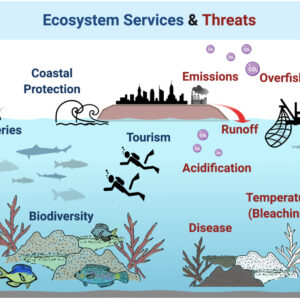
-
Fishery Collapses: Ocean warming, acidification, and habitat loss can cause fish populations to decline or collapse, threatening a major protein source for billions of people34.
-
Disrupted Food Webs: The loss of key species—especially small, low-trophic-level fish—can ripple through marine ecosystems, affecting larger fish, seabirds, and mammals, and ultimately reducing seafood availability4.
-
Reduced Marine Biomass: Higher temperatures and changing ocean chemistry reduce the overall biomass of marine animals, undermining the productivity of fisheries2.
Food Security and Nutrition
-
Rising Food Prices: Reduced agricultural and fishery output leads to higher food prices, making food less accessible, especially for low-income populations25.
-
Malnutrition and Deficiencies: Lower yields and reduced diversity in food sources can lead to malnutrition and micronutrient deficiencies, particularly in vulnerable regions25.
-
Food System Disruptions: Increased frequency of extreme events and interconnected global food trade mean that local ecosystem collapses can trigger global food shortages and price shocks56.
Biodiversity Loss and Ecosystem Services
-
Loss of Ecosystem Services: Ecosystems provide essential services such as water regulation, pest control, and nutrient cycling. Their collapse undermines these services, further threatening food production72.
-
Increased Pest and Disease Pressure: Climate change and biodiversity loss can increase the prevalence of pests and diseases, reducing crop and livestock productivity25.
Regional and Global Impacts
-
Vulnerable Regions Hit Hardest: Sub-Saharan Africa, South Asia, Central and South America, and small island nations are especially at risk of food insecurity due to climate-driven ecosystem collapse25.
-
Cascading Effects Through Trade: Disruptions in one region can spread globally via international trade, causing food shortages and instability in distant markets
Summary Table: Key Impacts
| Impact Area | Consequence for Food Sources |
|---|---|
| Agriculture | Crop failures, soil loss, pollinator decline |
| Fisheries | Fishery collapse, reduced seafood, disrupted food webs |
| Food Security | Higher prices, malnutrition, increased hunger |
| Ecosystem Services | Loss of pollination, pest control, water regulation |
| Global Trade | Cascading shortages, price shocks, social instability |
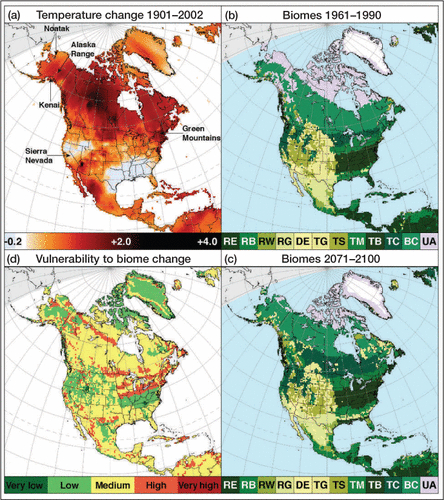
Planet Earth
Climate-driven ecosystem collapses pose a direct threat to human food sources on planet earth. This due to the undermining agricultural productivity, collapsing fisheries, and destabilizing the systems that sustain food security. The impacts are already being felt and are projected to worsen, highlighting the urgent need for mitigation and adaptation strategies
Climate Impacts on Weather Patterns
Planet earth is getting warmer, and this changes our weather. We see more hot days and bigger storms now.
Increased temperatures
Increased temperatures from global warming are a big problem. They make planet earth hotter, causing many issues for people and animals. Farms suffer because heat makes it hard to grow crops.
This leads to less food for everyone. Fish in the ocean also face trouble as warmer waters affect where they can live and find food.
Changes in weather bring about more heat waves, making it tough for people to stay healthy. Especially in cities, hot days become even hotter, leading to illnesses related to the extreme heat.
Scientists say that if we don’t reduce carbon dioxide emissions from burning fossil fuels like coal and oil, temperatures will keep rising.
Climate change its effects are being felt now on Planet Earth.
This quote tells us how serious the situation is today, not just years from now. Rising temperatures mean we need to act fast to save our planet and protect our health and food supply.
Stronger and more frequent storms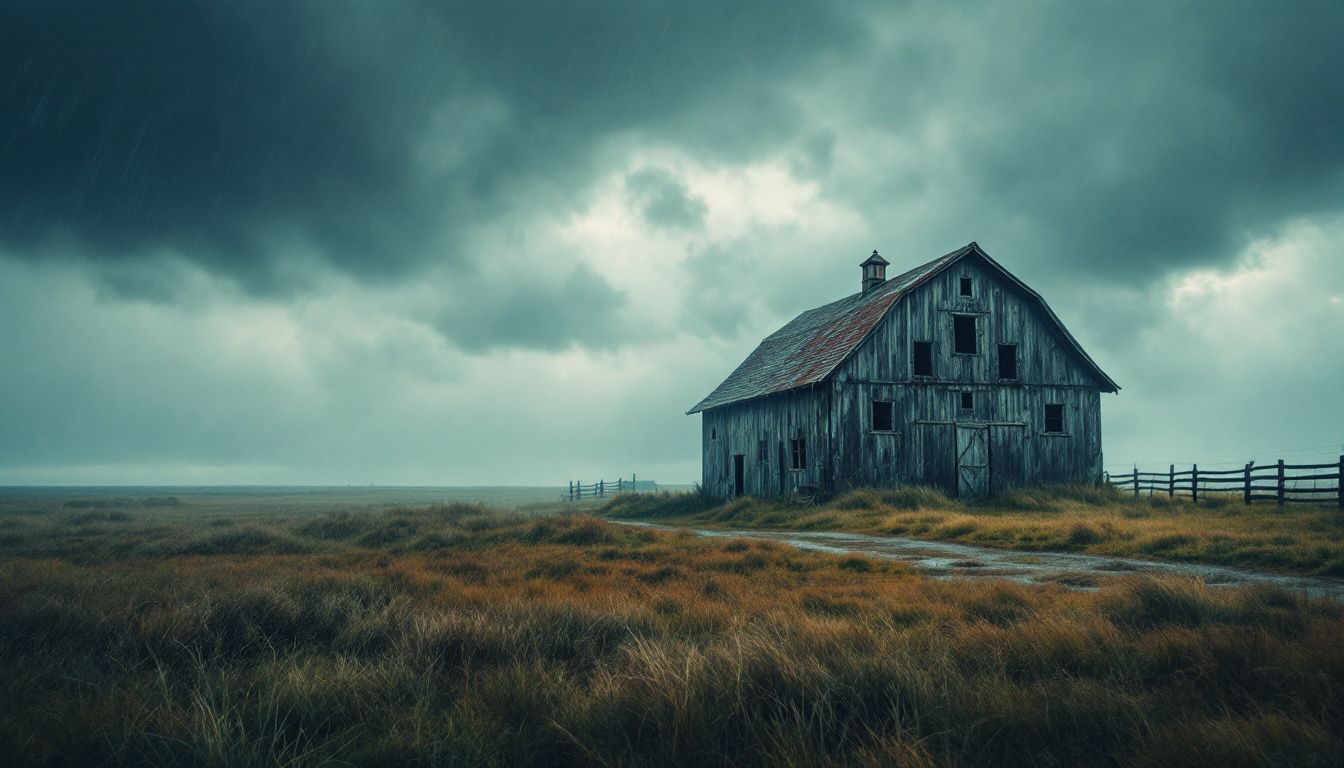
Storms are getting stronger and happening more often. This is because the Planet Earth is warming up. Warm air holds more water, so when it rains, there’s a lot more of it. This leads to floods that can destroy homes and farms.
Hurricanes pull power from warm ocean waters, growing bigger and hitting harder than before.
Places like coastlines face huge waves and winds that tear buildings apart and leave cities flooded. People have to leave their homes or spend a lot of money fixing them after the storms pass.
Next up, we’ll look at how all this affects animals in the sea and on land.
Effects on Marine and Terrestrial Ecosystems
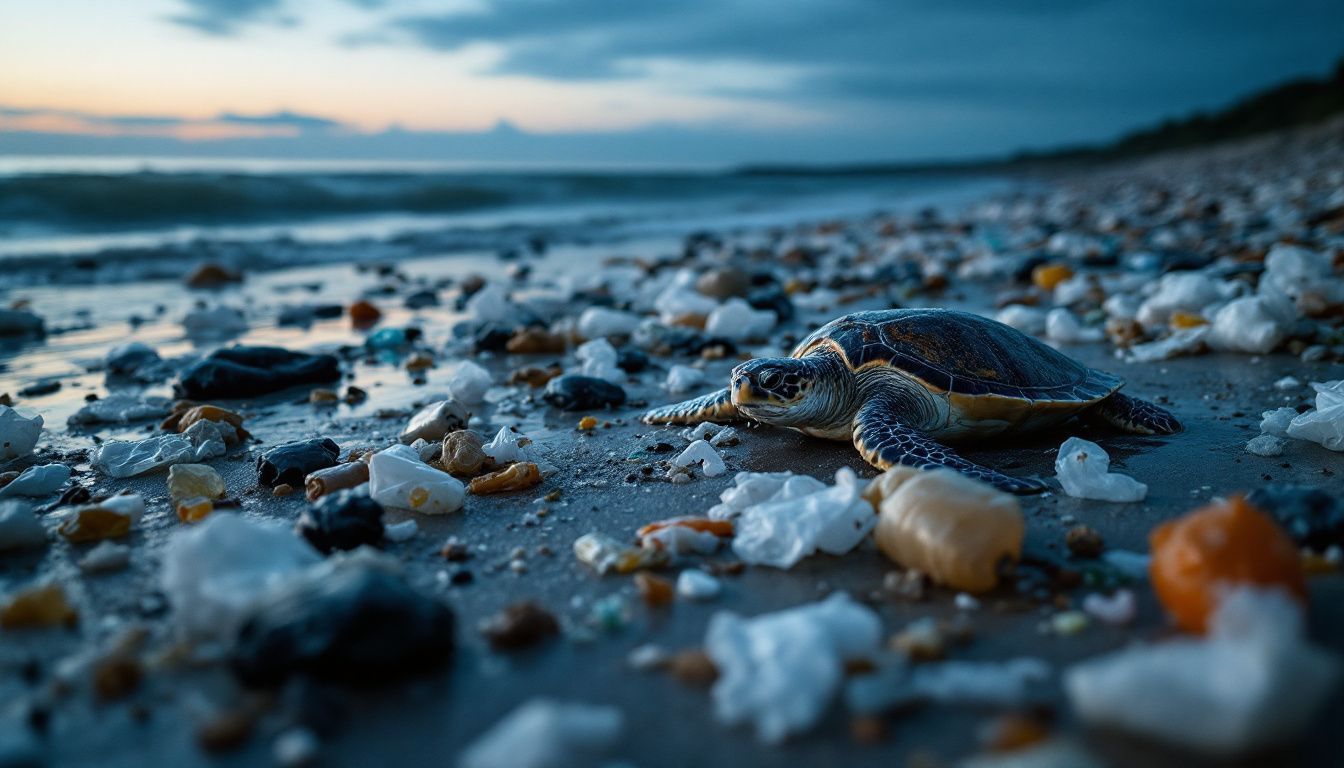
Our oceans and lands are feeling the heat from climate change. This messes up life in water and on ground, hurting creatures big and small.
Melting sea ice and rising sea levels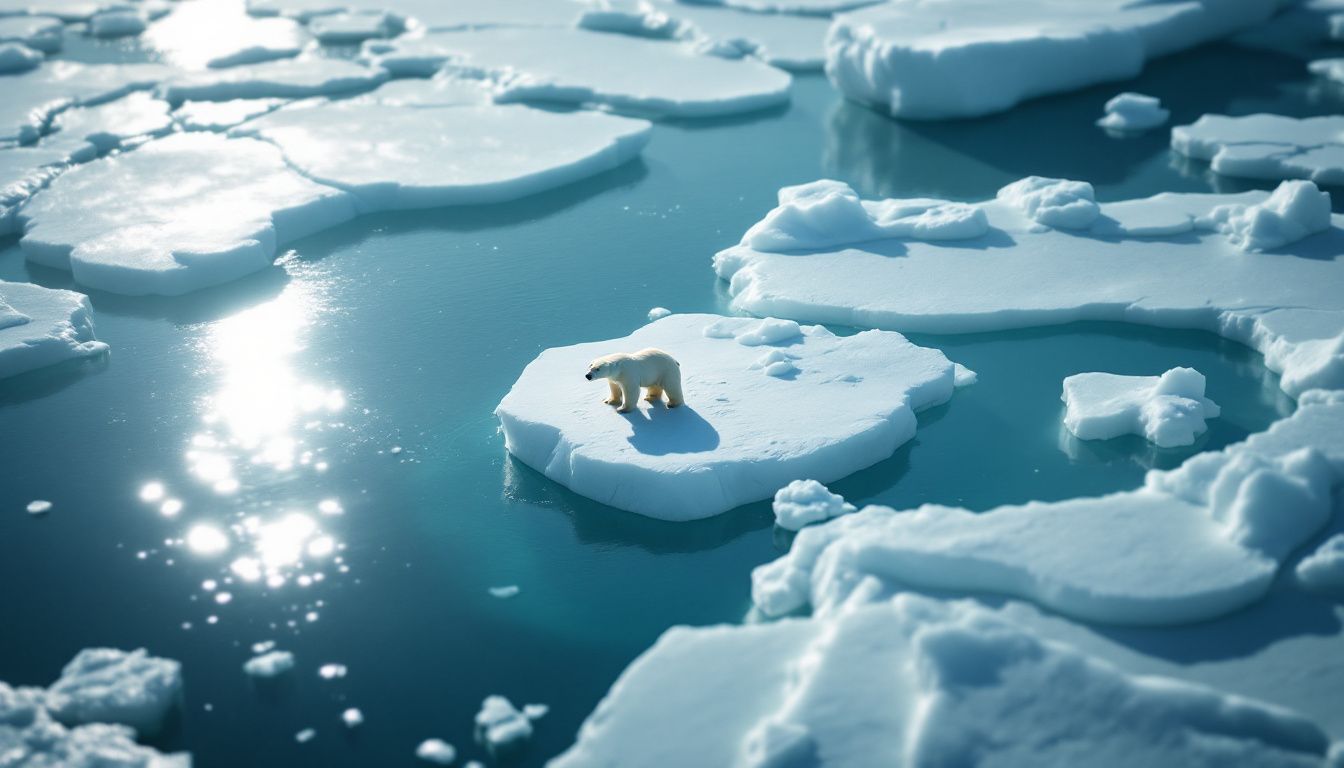
Melting sea ice and glaciers are big problems. They cause sea levels to rise. This hurts animals, like polar bears, that need ice to live and hunt. It also puts people living near the coast at risk of floods.
Climate change is making planet earth warmer, which melts more ice.
Rising sea levels can flood farms close to the ocean. This makes it hard for people to grow food. It also damages homes and important places where people work. We need to act now to slow down these changes by cutting down on things that make the Earth warmer, like carbon dioxide emissions from cars and factories.
Disruption of habitat and biodiversity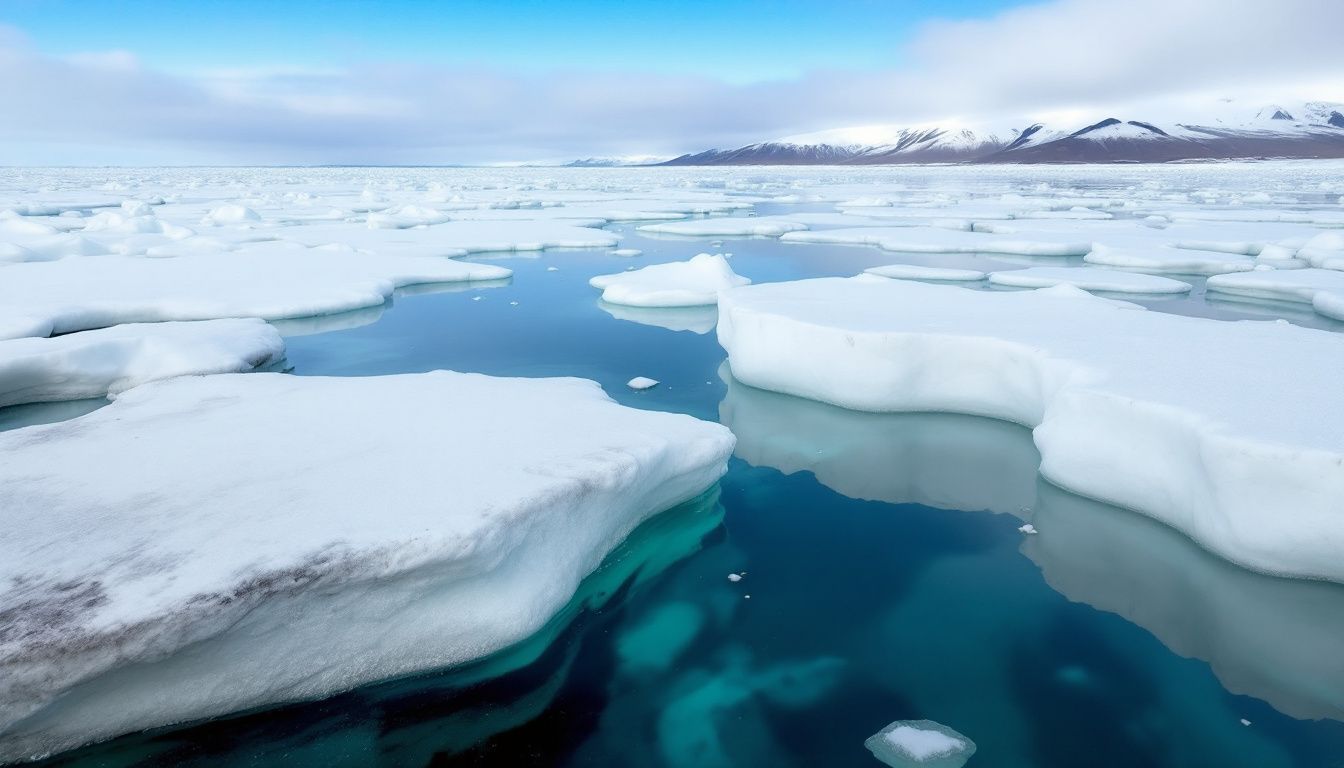
Climate change is raising our planet’s temperature. This increase in heat leads to rapid habitat changes that many species cannot match. Various fauna, flora, and underwater organisms lose their habitats.
Wildfires ravage forests where birds and animals take refuge. Coral reefs undergo damage due to elevated temperatures and ocean acidity, both significant contributors to biodiversity, serving as vibrant underwater metropolises teeming with life.
Rising sea levels follow the thawing of ice in regions such as the Arctic, resulting in the inundation of coastal zones home to turtles and several species of birds, pushing them to the brink of extinction.
The fragile equilibrium within ecosystems is disturbed, resulting in a decrease in biodiversity. The disappearance of one species has ripple effects on others that relied on it for sustenance or shelter.
Every reduction in biodiversity weakens our global ecosystem further, undermining its ability to adapt to climate changes.
Farms encounter an increase in pests and diseases as climates shift, putting food sources in jeopardy. Prompt climate action is vital to safeguard the habitats of immeasurable species and to maintain the balance of our natural environment.
Impact on Human Health and Safety
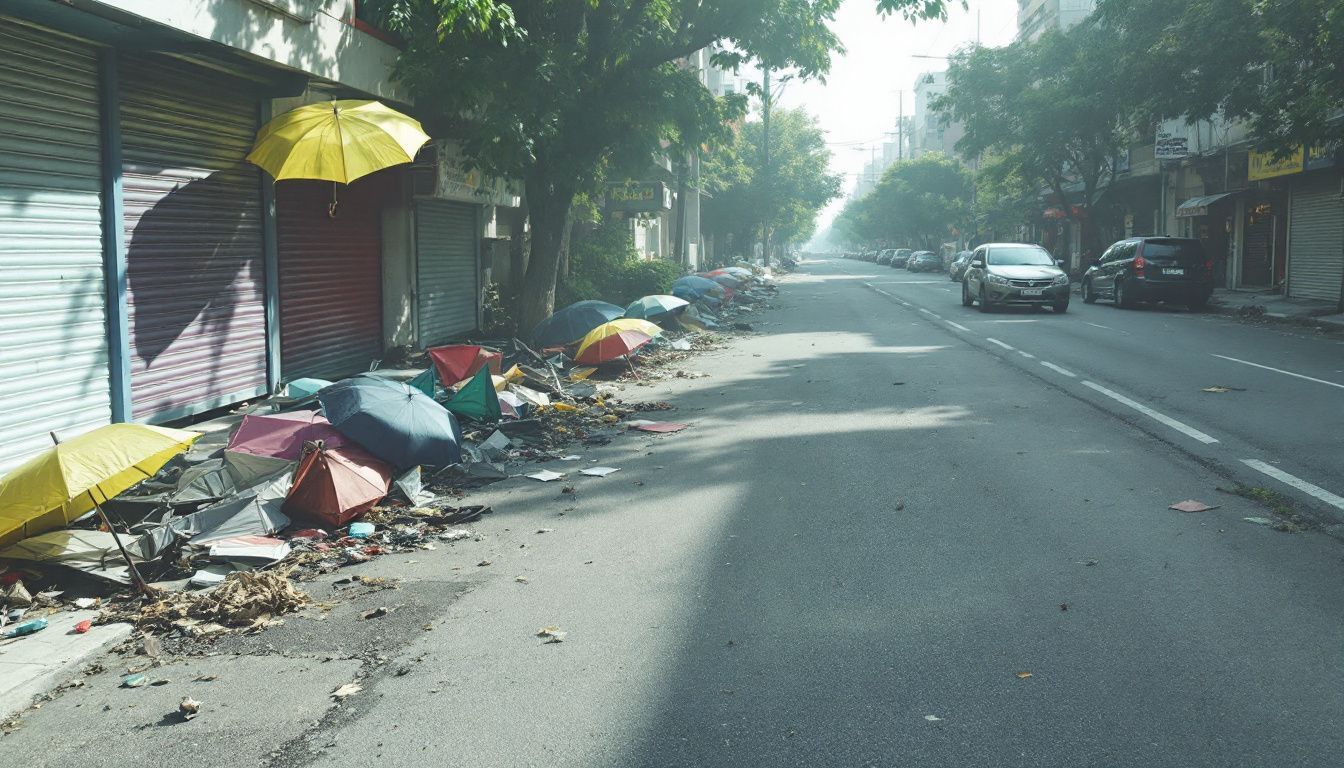
Climate change makes the air hotter and storms stronger. This leads to more sickness from heat and harms from storms.
Increased heat-related illnesses
Heat waves are becoming more common due to climate change. This means more people get sick from the heat. Our bodies can’t cool down well when it’s too hot. This leads to illnesses like heat stroke and dehydration.
Experts say this is a big threat to human health.
These illnesses hit hard in cities, where it’s even hotter because of all the buildings and roads. Kids, older adults, and folks who work outside are at great risk. We must find ways to help them stay cool.
Next, let’s talk about how extreme weather events also put us in danger.
Greater risks from extreme weather events on Planet Earth
Extreme weather events are becoming more common because of climate change. These include big storms, floods, and droughts. They can hurt people’s health and safety a lot. For example, floods and hurricanes can destroy homes and make many people sick or injured.
Droughts can lead to water shortages, making it hard for people to find clean drinking water.
Climate change also makes the weather wilder and less predictable. This means farmers have a harder time growing food because they don’t know what the weather will do. When crops fail, there’s less food available, which can lead to hunger in some places.
So, as our planet gets warmer, we face bigger challenges from extreme weather that can affect everyone differently.
Economic and Infrastructure Challenges

Climate change hits our pockets and the structures we rely on, hard. Farms struggle to produce enough food as weather turns against them, while roads and bridges take a beating from more intense storms.
Threats to agriculture and food security
Farms are facing hard times because of climate change. Crops and animals do not grow well in extreme heat, floods, or drought. Pests and diseases also increase, attacking plants more than before.
This makes it tough to produce enough food.
Sea levels rising can flood fields near the ocean, ruining crops there. Droughts cut down water for irrigation, making it harder to grow food in many places around the world. Many farms lose their battles with weeds that thrive in warmer temperatures.
Food security is at risk as these problems make it hard for everyone to have enough to eat. Poor countries face bigger challenges because they have fewer ways to fight against these changes.
Damage to critical infrastructure
Climate change hits hard on important buildings and systems. Roads, bridges, and power lines suffer from floods, storms, and heatwaves. This makes it tough for people to get what they need like water and electricity.
It also costs a lot of money to fix these things after they are damaged.
As the sea levels go up because of melting ice, coastal areas face more risks. Airports near the ocean or rivers can flood easier. This messes up travel plans for many people. Farms have a harder time too because their land can either get too much water or not enough, hurting food crops badly.
Conclusion

Our world, planet earth, faces big challenges from climate change. Warmer air and seas make storms stronger and more common. Ice is melting, and sea levels are going up. This hurts farmers, cities, and our health.
We must act now to save our planet for everyone.
FAQs
1. What are the key impacts of climate change on our planet Earth?
Climate change has a multitude of effects, including sea level rise due to warming temperatures and melting Arctic ice, which can inundate coastal areas. Other impacts include air quality issues from increased ground-level ozone and particulate matter, leading to public health problems.
2. How does climate change affect our oceans?
Global climate change leads to ocean acidification as more CO2 is absorbed from the atmosphere. This results in coral bleaching that harms corals and other marine life – a crucial part of our ecological system.
3. Can climate change influence food security?
Absolutely! Changes in the global climate can lead to extreme weather events impacting crop yields, causing food insecurity particularly in developing countries already facing challenges like malnutrition.
4. Are there any health implications related to changing climates?
Yes, warmer climates can increase waterborne diseases and allergens affecting public health significantly; even mental health could be impacted by disasters exacerbated by climate changes such as Hurricane Katrina.
5. What role do greenhouse gases play in this crisis?
Greenhouse gases like carbon dioxide (CO2), nitrous oxide contribute majorly towards this crisis by trapping heat within the atmosphere – hence causing global warming which accelerates all these consequences we face today.
6. How can renewable energy help mitigate some effects of this changing environment?
Renewable energy sources such as wind or solar power provide clean energy alternatives that reduce carbon pollution caused by burning fossil fuels thus helping us adapt better for future climatic conditions.


 Cart is empty
Cart is empty 








